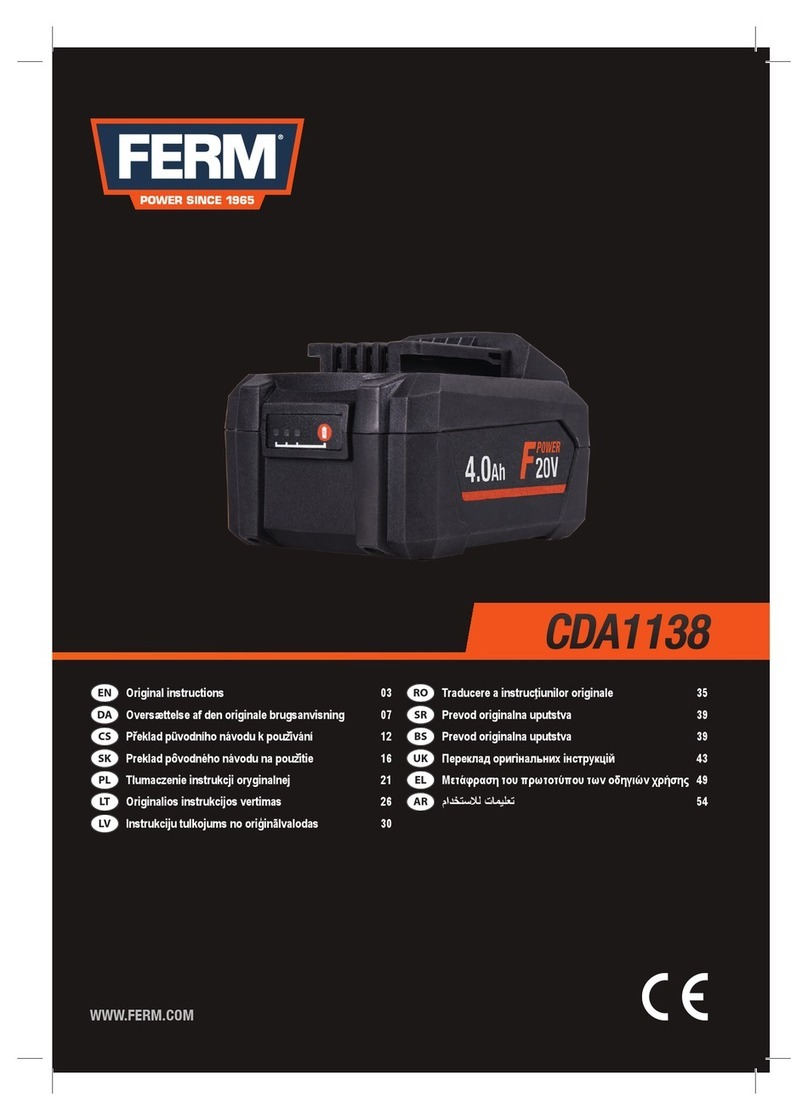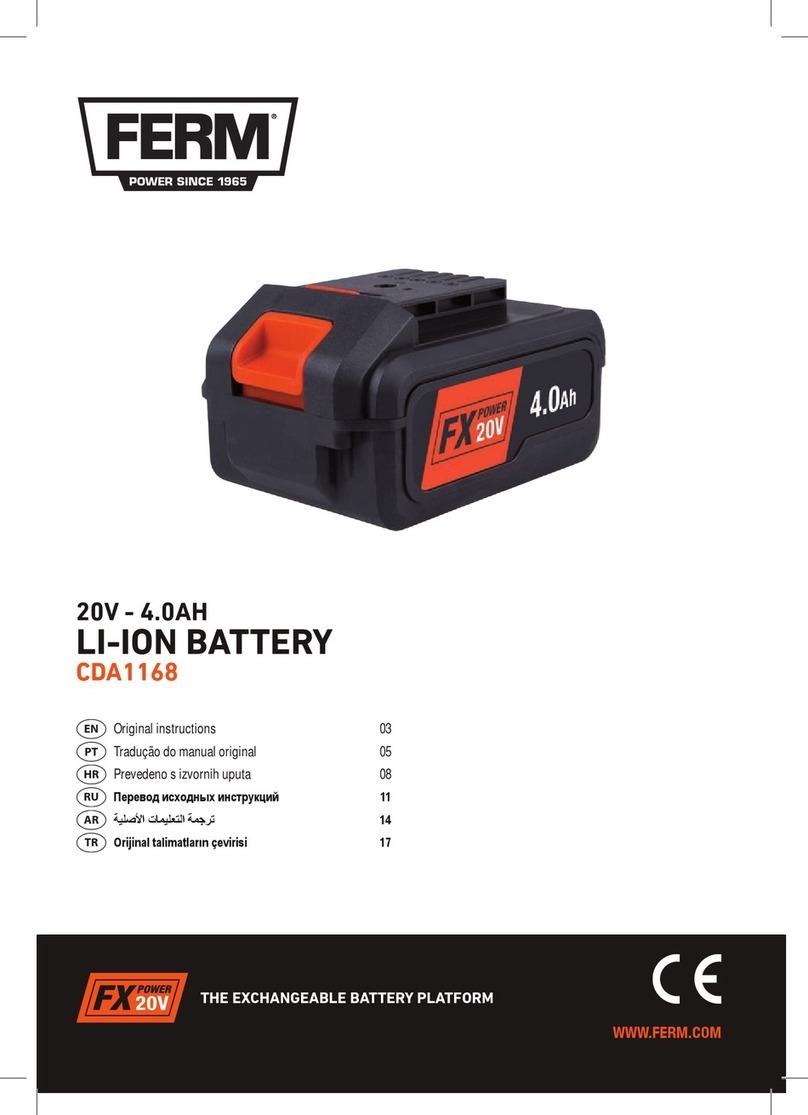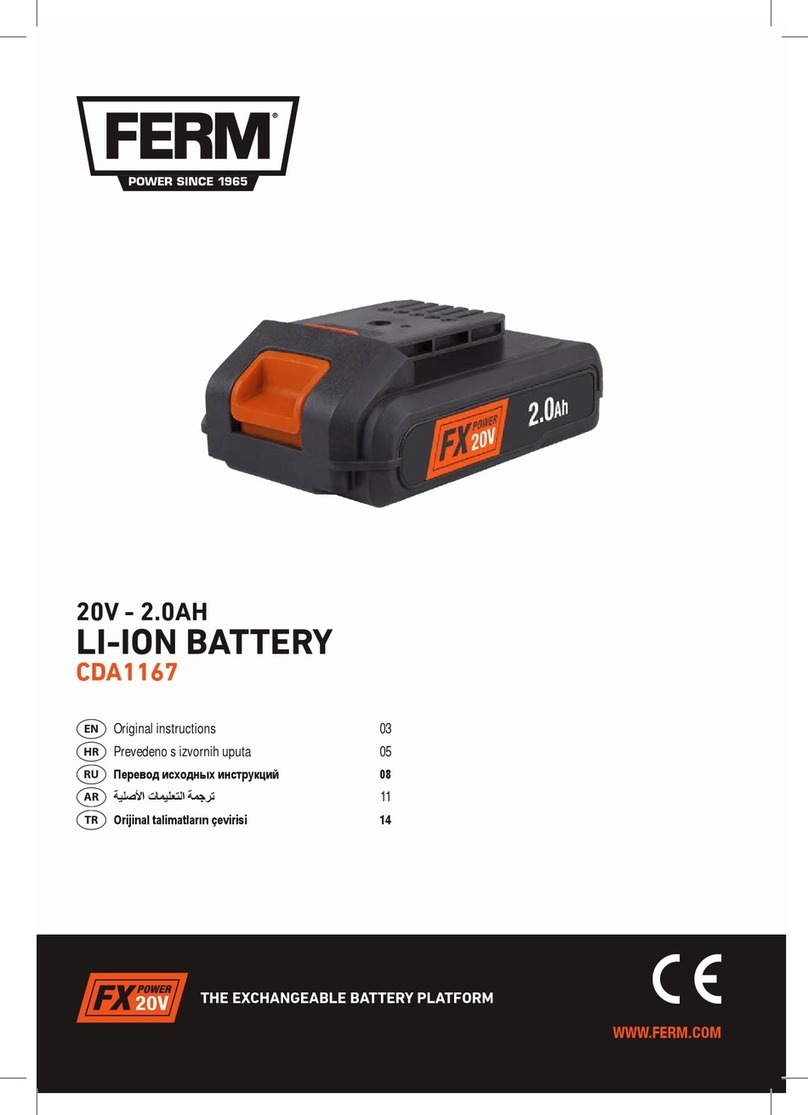
Stecken Sie das Ladegerät in die elektrische•
Steckdose.
Laden Sie NiMH-Akkus nur bei
Umgebungstemperaturen zwischen
5 ºC und 40 ºC auf. Lithium-Ionen-
Akkus können bei Umgebungs-
temperaturen zwischen 0 ºC und 45 ºC
aufgeladen werden.
Im Vergleich zu NiCd- und NiMH-Zellen haben
Lithium-Ionen-Zellen keinen Memory-Effekt durch
zwischenzeitliches Aufladen. Im Gegensatz zu
NiCd- und NiMH-Akkus, die vor dem Aufladen
entladen werden müssen, muss ein Lithium-
Ionen-Block nicht vollständig entladen werden.
Dieser Akkublock kann ungeachtet des
gegenwärtigen Ladestands jederzeit aufgeladen
werden, ohne dabei einen Großteil der
ursprünglichen Leistung und Standzeit
einzubüßen.
Lithium-Ionen-Zellen können lange Zeit gelagert
werden, ohne viel von ihrer Ladekapazität zu
verlieren. Wenn die Maschine für einen längeren
Zeitraum nicht verwendet wird, ist es am besten,
den Akku im aufgeladenen Zustand zu lagern.
Bevor Sie den Akku das erste Mal verwenden,
sollten Sie ihn etwa 1 - 2 Stunden aufladen, so
dass er die volle Kapazität erreicht. Die endgültige
Kapazität des Akkus wird nach 4 - 5 Ladezyklen
erreicht.
Entladen des Akkus
Nicht nur das Laden des Akkus ist
wichtig, sondern das Entladen ist
genauso wichtig oder sogar noch
wichtiger.
Wenn der Akku geladen ist, muss das Werkzeug
solange verwendet werden, bis Sie feststellen,
dass die Leistung des Werkzeugs abnimmt und
dass die maximale Drehzahl nicht mehr erreicht
wird.
Der Akku ist nun fast entladen. Sie können jetzt
beginnen, den Akku aufzuladen.
Wenn ein Akku, der beispielsweise noch ein Drittel
seiner vollen Ladekapazität besitzt, aufgeladen
wird, kann der so genannte ‘Memory-Effekt”
eintreten.
Da während des Ladens jetzt nur der entladene
Teil des Akkus geladen wird, kann der Akku in dem
einen Drittel, das noch geladen ist, beginnen zu
kristallisieren. Dieser Teil der Batteriekapazität
kann niemals danach benutzt werden.
Entladen Sie den Akku nicht bis aufs Äußerste.
Sobald Sie bemerken, dass die Leistung oder die
maximale Drehzahl nachlässt, müssen Sie den
Akku aufladen. Wenn Sie das Werkzeug weiterhin
verwenden und der Akku vollständig entladen
wird, kann der so genannte ‘Polumschaltungs-
Effekt’ auftreten. Die Polarität der Batteriepole wird
vertauscht: ‘+’ wird ‘-’ und ‘-’ wird ‘+’. Wenn das
aufgetreten ist, bleibt die Polarität beim Laden
vertauscht, und der Akku wird irreparabel
beschädigt.
Wenn das Werkzeug für einen längeren
Zeitraum nicht verwendet wird, muss
der Akku vorher vollständig geladen
werden. Der Akku muss im geladenen
Zustand gelagert werden.
4. WARTUNG UND PFLEGE
Reinigen
Reinigen Sie das Maschinengehäuse regelmäßig
mit einem weichen Tuch, vorzugsweise nach
jedem Einsatz. Halten Sie die Lüfterschlitze frei
von Staub und Schmutz. Entfernen Sie
hartnäckigen Schmutz mit einem weichen Tuch,
angefeuchtet mit Seifenwasser. Verwenden Sie
keine Lösungsmittel wie Benzin, Alkohol,
Ammonia, usw. Derartige Stoffe beschädigen die
Kunststoffteile.
Störungen
Sollte beispielsweise nach Abnutzung eines Teils
ein Fehler auftreten, dann setzen Sie sich bitte mit
der auf der Garantiekarte angegebenen
Serviceadresse in Verbindung. Im hinteren Teil
dieser Anleitung befindet sich eine ausführliche
Übersicht über die Teile, die bestellt werden
können.
Umwelt
Um Transportschäden zu verhindern, wird die
Maschine in einer soliden Verpackung geliefert.
Die Verpackung besteht weitgehend aus
verwertbarem Material. Benutzen Sie also die
Möglichkeit zum Recyclen der Verpackung.






























